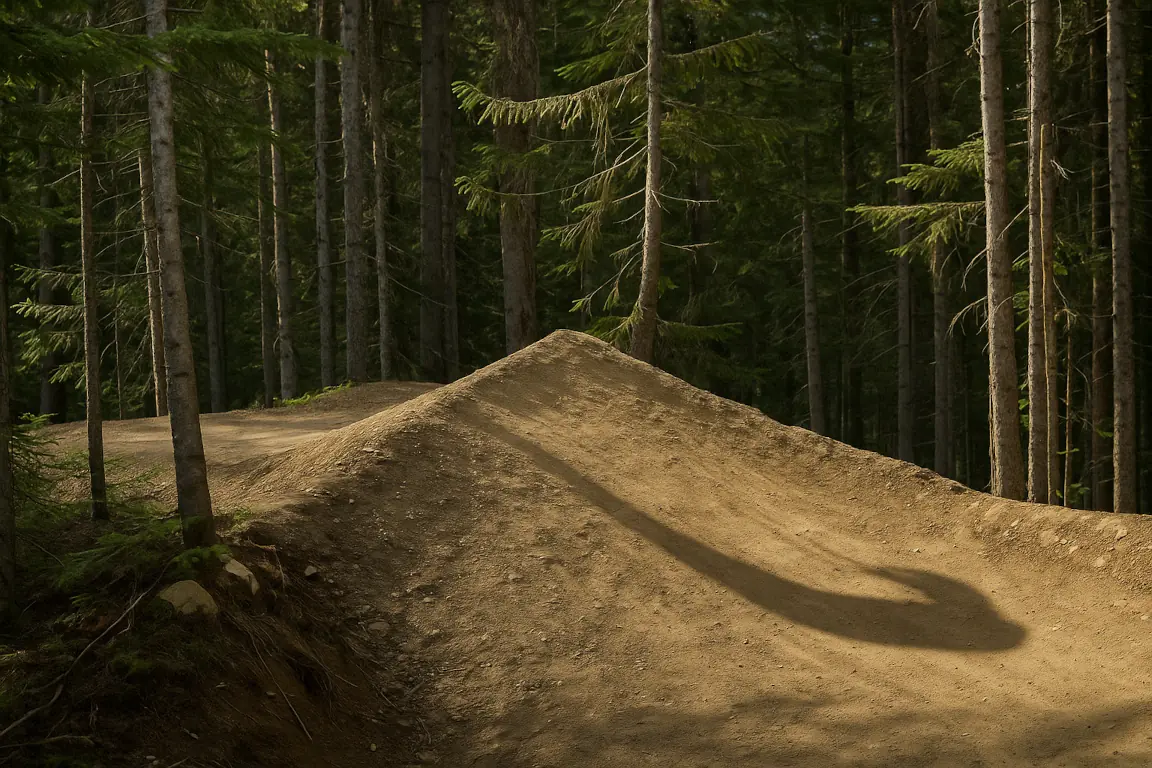
Jump Line Design
Learn how to design and build flowing jump lines that provide progression, maintain rhythm, and create an exhilarating riding experience.
Overview
Understanding Jump Lines
Jump lines are sequences of jumps designed to be ridden in succession, creating a flowing and rhythmic experience for mountain bikers. Unlike isolated features, jump lines require careful planning to ensure proper speed, spacing, and progression.
- Flow and rhythm are paramount
- Progressive difficulty increases engagement
- Speed management through design
- Consistent takeoff and landing angles
- Safety buffers and escape routes
- Consistent rhythm between features
- Proper spacing based on rider speed
- Minimal pedaling or braking required
- Smooth transitions between elements
- Visual cues for approaching features
Types of Jump Lines
Jump lines can be categorized by difficulty level, with each type offering different challenges and progression opportunities.
Low, rollable tabletops with gentle transitions. Focus on rhythm and basic skills development.
Medium-sized tabletops and small gaps. Introduces more air time while maintaining safety.
Larger tabletops, gaps, and step-ups/downs. Requires good air awareness and bike control.
Complex combinations and technical features. Designed for skilled riders with significant experience.